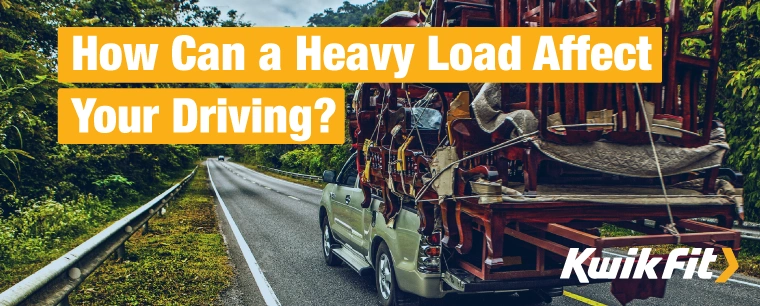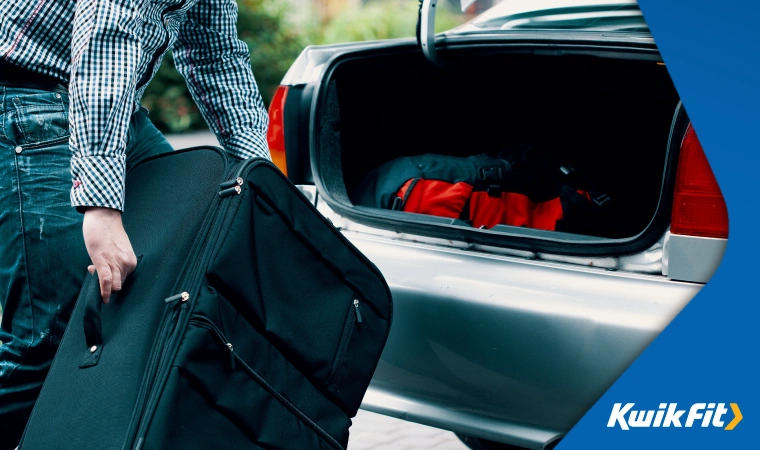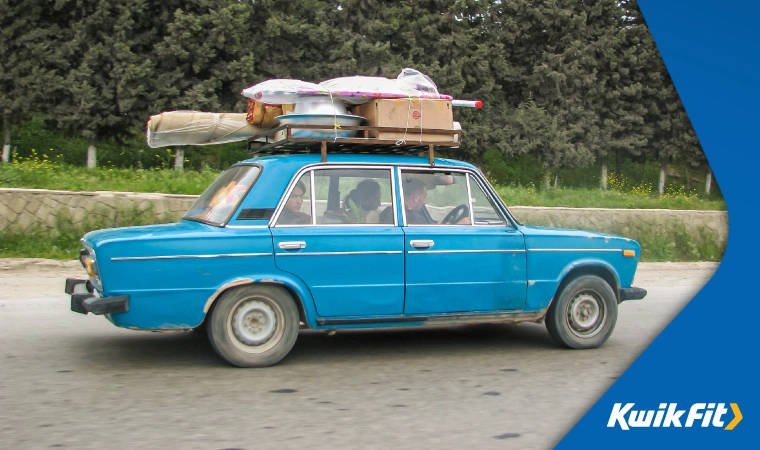How Can a Heavy Load Affect Your Driving?
Jack Dreyer | Tuesday 3rd January 2023 4:43pm

Planning on moving some furniture with your car? Taking some bags of rubbish to the dump? How about towing a heavy trailer? If so, you might want to read on and learn how transporting a heavy load can change the handling of your vehicle.
If you load anything weighty into your vehicle or even sit down in it suddenly, you may notice a sudden downward movement as the car takes on the weight. But what else is affected when a vehicle bears a load?
Driving with a heavy load

Although it seems obvious, many drivers fail to account for the fact that a vehicle’s handling and capabilities change when it bears a heavier load than usual. This lack of consideration often means that people may think they can still drive their car at the same speed — and in the same style — as they do when it’s empty.
However, this is a dangerous misconception, often causing accidents. So much so that the UK theory test has multiple questions about the impact of a load bearing on vehicles. Would you be able to answer correctly?
“What would be affected if you carry a very heavy load on your vehicle?”
- The vehicle's battery
- The vehicle's gearbox
- The vehicle's handling
- The vehicle's ventilation
The answer is C. Let’s look more in-depth at what we mean by ‘vehicle handling’.
Stopping and starting
When a car is bearing more weight than it is used to, the time it takes to stop and start will change. This is because the car requires more power to move since it weighs more. An increase in the weight of the vehicle also increases the force pushing downwards into the road, therefore heightening the amount of friction the vehicle has to overcome if it wants to move forward.
With greater amounts of friction, acceleration and moving off quickly will likely take longer, so you can expect to be pushing down on the gas pedal a little more than usual if you’re carrying a heavy load.
Braking distance
With heavier loads also comes a reduction in braking distance as the car will take longer to slow down. Why? Because there’s far more weight moving forward than the car is used to.
As a result, brake in good time with the knowledge that it will take you far longer to slow down to a speed you can normally reach with just a quick touch of the brake pedal. Planning ahead and braking in good time is especially important to avoid any unexpected sudden braking and related collisions.
Fuel consumption
Due to the increased acceleration needed just to move off in a vehicle bearing a heavy load, it is often the case that fuel consumption increases too.
Naturally, the extra weight increases the amount of energy the car needs to move itself, requiring more fuel to power it. Think about it in human terms, if you had to walk a few miles with a heavy rucksack, you’d probably pack a few more snacks to keep you going.
This is often why when you read an article on ‘How to reduce your fuel consumption’ it often contains advice on decluttering your car and removing unnecessary items that may be weighing it down.
Steering
Another aspect of vehicle handling affected by excess weight is the steering. As you might expect, the greater the load, the more tricky steering gets. So, when turning corners, be sure to slow down and give the car plenty of time to respond to the direction given to it by the steering wheel.
If the load you are carrying takes the form of an attachment (a trailer or a caravan), you should account for extra length and prepare yourself to deal with any ‘swinging out’ that occurs when turning or travelling at higher speeds.
There are separate, lower speed limits for vehicles that are towing as specified by the Government. See below:
- 30 mph in built-up areas
- 50 mph on single carriageways
- 60 mph on dual carriageways
- 60 mph on motorways
What to do when driving with a heavy load

If you do have to travel with a heavy load — perhaps collecting furniture or transporting multiple passengers — there are certain things you can do to improve vehicle handling and reduce the wear and tear to your car’s brakes, clutch, and tyres. Here are some ideas:
Find out the maximum load your car can carry. You can find this in the owner’s manual.
Make sure the tyres are inflated to a slightly increased pressure before driving with a heavy load.
Reduce the amount of load on board when possible.
Break in good time.
When travelling up or downhill, keep the car in low gear to make sure you have control over it.
Any facts, figures and prices shown in our blog articles are correct at time of publication.
Featured Articles
Is it Illegal to Drive With One Headlight?
Saturday 19th July 2025
Wondering if it’s illegal to drive with one headlight? Learn about the safety risks and penalties of illegal blown bulbs and why you should fix them promptly.
Air Con in EVs & Hybrids: Experts Answer Your Questions
Monday 30th June 2025
Does air con drain EV batteries? Can you use the air con while charging an electric car? Find out the answers to these questions & more from Kwik Fit’s experts.
Why Is Your Car Making a Noise? Fixes & Tips
Friday 13th June 2025
When your car starts making unexpected noises, it can certainly be quite disconcerting; it may be nothing to worry about, but here’s what you need to know.









